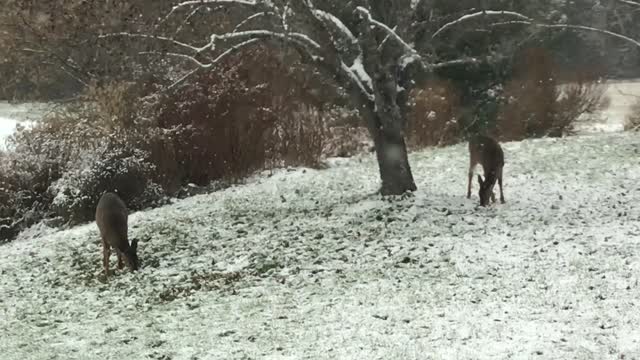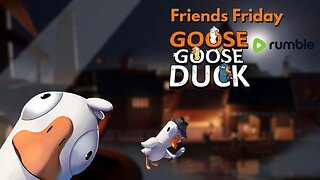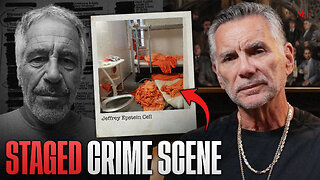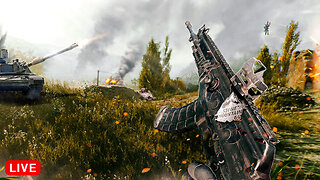Premium Only Content

Baby deer & mom frolic in first snow of the season
Such a beautiful sight to wake up to. This mom and 2 small fawns stopped out on my back property to feed on the apples and berries.
Here in New Hampshire, the white-tailed deer population is approximately 100,000 individuals. The areas of greatest densities are in the southern counties (Rockingham, Hillsborough, and Cheshire) and along the Connecticut River Valley (Grafton County). In 2014, the NH Fish and Game Department began the process of revising its 10-year management plan for white-tailed deer, moose, turkey, black bear, snowshoe hare, and ruffed grouse.
This document, called the NH Game Management Plan, spans the period of 2016 to 2025. Population level goals for deer were adjusted to more closely reflect current biological conditions and limitation, as well as public interests and concerns. These goals aim to stabilize the deer population in many areas of the state while increasing or reducing it in others.
Habits and Habitats
White-tailed deer can live in a variety of habitats, including farmlands, brushy areas, woods, mountains, and suburbs and gardens. They feed on green plants, including aquatic species in the summer, acorns, beechnuts, and corn in the fall, and woody vegetation, including buds and twigs of birch, maple and conifers in the winter. White-tailed deer will typically consume 5 to 9 pounds of food each day and find water from snow, dew and waterbodies.
Individual deer group into two types of social combinations. These include the family group, with a doe and her young, and the buck group. The family group will stay together for approximately a year. Buck groups are structured with a dominance hierarchy of 3 to 5 individuals. Bucks will challenge each other with stares, lowered ears, kicking, sparring (physically pushing each other back), and less commonly, thrashing of forefeet.
During the winter, these two deer groups may come together, forming communities of up to 150 individuals in locations called “yards.” This unification keeps trails open and accessible for feeding and also provides protection from predators. However, there have been problems with humans providing supplementary feed sites for deer in the winter. These sites can cause unnaturally high densities of congregated deer that attract predators, increase the risk of disease transmission, increase aggression within the community, and lead to over-browsing of local vegetation and more deer-vehicle collisions. They cause deer to be more dependent on humans and artificial food sources that provide few benefits.
-
 LIVE
LIVE
Side Scrollers Podcast
1 day ago🔴SIDE SCROLLERS SUB-A-THON🔴FINAL DAY!🔴Craig Makeover + US Dart Throw + More!
999 watching -
 LIVE
LIVE
Tundra Tactical
3 hours agoProfessional Gun Nerd Plays Battlefield 6
31 watching -
 LIVE
LIVE
SavageJayGatsby
2 hours agoFriend Friday – Goose Goose Duck Chaos! 🦆💥
17 watching -
 58:55
58:55
Roseanne Barr
4 hours agoJOSH HAMMER | The Roseanne Barr Podcast #120
154K148 -
 1:23:12
1:23:12
Kim Iversen
3 hours agoRFK, JFK, Trump, Charlie Kirk — Deep State Assassinations? | Sean Stone
12.6K34 -
 LIVE
LIVE
EricJohnPizzaArtist
3 days agoAwesome Sauce PIZZA ART LIVE Ep #66: Blabs from Side Scrollers!
71 watching -
 LIVE
LIVE
Nikko Ortiz
31 minutes agoNew Army Machine Gun In Insurgency Sandstorm... |Rumble Live
70 watching -
 27:54
27:54
Michael Franzese
3 hours agoDeep Dive Into The Epstein Crime Scene Mystery
23.1K10 -
 1:08:45
1:08:45
DeVory Darkins
6 hours agoLetitia James drops frantic speech after pleading not guilty as Canada gets NIGHTMARE NEWS
52.8K34 -
 LIVE
LIVE
StoneMountain64
5 hours agoBattlefield 6 Class Locked Breakthrough and Attachment Unlocks
27 watching